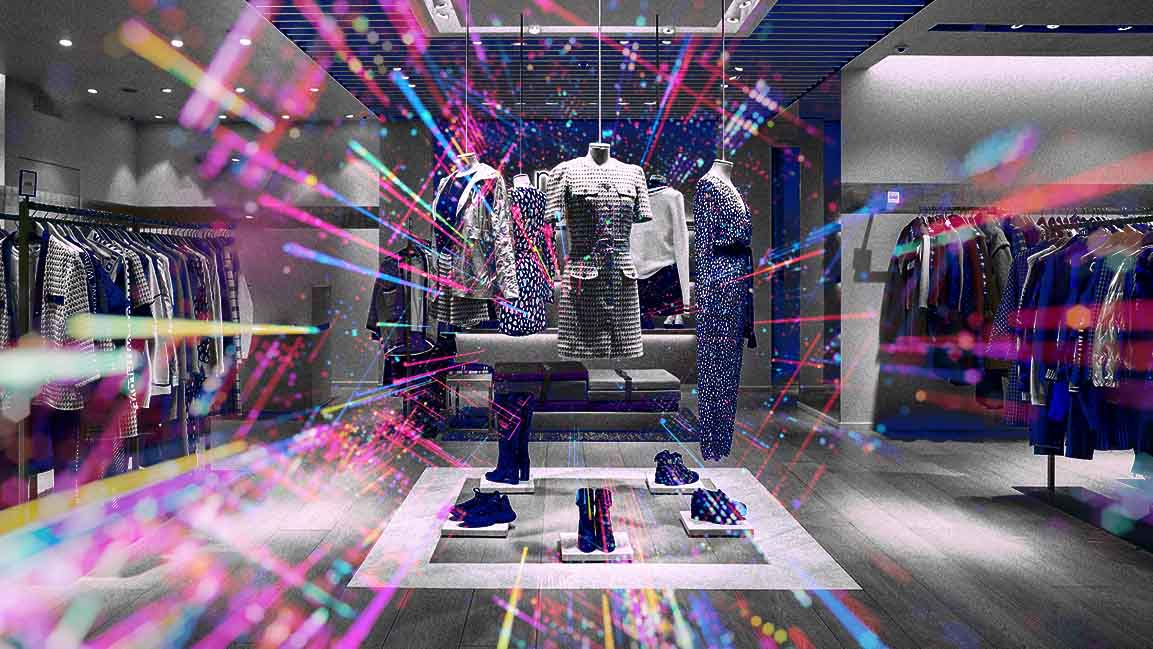How Saudi retailers are harnessing AI to predict, personalize, and profit
How ready is Saudi Arabia to embrace AI's limitless potential?

In Saudi Arabia, AI in retail is no longer an experiment but a calculated shift toward redefining commerce. Embedded in every step—from predicting consumer demands to optimizing logistics with unprecedented precision—AI is transforming what was once unimaginable. Algorithms sift through vast data, turning insights into real-time actions that shape everything from product placement to personalized offers.
Cyril Semaan, Partner Retail and Consumer Goods – India, Middle East, Africa at Oliver Wyman, insists that AI is far from new and has been evolving for half a century.
He believes AI is not new and has been there for decades. He adds, “We are in its fourth generation, but it gained significant breakthrough as technology has evolved and made these algorithms and language models much more accurate, much more precise, much more affordable and easier to integrate with day-to-day business operations.”
THE AI SURGE IN SAUDI RETAIL
Several key factors, including economic diversification initiatives, shifts in consumer behavior, and rapid technological advancements, are fueling the adoption of AI in Saudi Arabia’s retail sector. Saudi Arabia’s Vision 2030 prioritizes investment in technology, making AI a vital component of this transformative strategy.
Semaan believes AI drives transformation across customer experience, operational efficiency, and data-driven decision-making.
AI is a powerful product because it combines a wealth of diverse data — both structured and unstructured — with increasingly advanced engines like large language models, generative AI, and computer vision. Fueled by vast data and driven by ever-stronger computational capabilities, including emerging technologies like quantum computing, AI is evolving rapidly.
For retailers, this evolution is a game-changer. To succeed, retailers need to strengthen their core offerings and reinvest strategically. Throughout history, technology has consistently done three things: made us smarter, made us more efficient, and made our products better. AI amplifies these benefits across individuals, departments, and entire organizations, empowering them to deliver smarter, more efficient, and higher-quality products and experiences for customers.
INVESTING IN AI TECHNOLOGIES
Saudi retailers are leading the way in adopting and deploying AI across their operations, investing in research and development, developing tailored solutions, and prioritizing the attraction, retention, and empowerment of skilled talent.
“Investing in R&D, or outsourcing it, ensures AI is applied effectively in the retail industry. Embracing an open ecosystem mindset and fostering compliant data sharing is essential to maximize AI’s impact, as retailers with strong data foundations and extensive data collection will benefit most from AI adoption,” adds Semaan. Most importantly, investing in people and upskilling employees to work with AI is key to successful integration.
AI ADOPTION ACROSS SECTORS
AI adoption will eventually span all retail sectors.
While currently higher in e-commerce, grocery retail, and fashion, all sectors will follow suit.
As consumers’ expectations continue to rise, they increasingly demand more personalized and meaningful experiences in retail.
Innovative organizations are turning to generative AI-driven solutions to meet these evolving needs, identifying four key imperatives. First, they are expanding their reach by enhancing existing capabilities and creating new ones, allowing AI to strengthen their command of existing markets and facilitate growth into new areas. Second, they’re reclaiming resources to boost efficiency and prioritize customer connections, using AI to handle routine interactions and streamline processes, which frees up staff to focus on building lasting relationships. Third, consumers are demanding ultra-tailored products and services, and generative AI enables companies to deliver personalized offerings faster and at scale.
Finally, AI is proving its surprising ability to excel in “human” areas, providing empathetic, conversational interactions that make customers feel understood.
IoT, AUTOMATION , AND AI
To enhance logistics and in-store operations, Saudi retailers are leveraging IoT and automation to streamline processes.
IoT enables real-time inventory tracking, reducing stockouts and optimizing stock levels, while automation, including autonomous delivery systems and automated warehouses, boosts efficiency. In-store, IoT can enhance customer experience through smart fitting rooms or digital price tags, and automated checkout systems streamline the shopping experience, allowing retailers to reduce labor costs and increase operational accuracy.
Retailers are also addressing data complexities by implementing data governance frameworks to maximize AI-driven insights. These frameworks enable better integration of structured data, such as point-of-sale systems and customer profiles, with unstructured data like customer feedback. Retailers can extract actionable insights using AI tools like natural language processing (NLP), centralizing data to drive informed decision-making and meaningful action.
AI BEYOND CUSTOMER INTERACTION
Just as AI can be leveraged for customer interactions, it has a big role in ensuring retailers improve logistics automation and in-store operations by enhancing productivity and driving efficiency or smarter, data-driven decisions.
In logistics, AI can optimize the supply chain through demand forecasting, inventory management, supplier selection, and contract negotiation. It can enhance route optimization and fleet management for last-mile deliveries by analyzing real-time traffic data, and improve warehouse operations through automation, robotics, and inventory management.
In-store, AI supports automation in restocking, shelf monitoring, assortment optimization, cashier-less checkouts, and queue management, reducing labor needs and streamlining operations. Robotics and computer vision further increase efficiency, allowing employees to focus more on customer service.
THE EMPATHETIC TOUCH
While AI has the potential to revolutionize the retail industry, its true success depends on the people who implement and engage with it. As Semaan emphasizes, only 10% of AI in retail is about technology—the remaining 90% is about people. This highlights a fundamental truth: AI can provide powerful tools and capabilities, but its real impact is determined by how well it is integrated into the daily lives of employees and how it aligns with their needs.
If the focus shifts solely to technology, it risks neglecting the human element, critical for driving meaningful, sustainable change. Retailers must reassure their teams that AI is not a threat but a tool designed to enhance their roles, equip them with real-time data, and boost job satisfaction.
Without a strong focus on employee engagement and empathy-driven strategies, AI will not achieve its full potential. He highlights that scaling AI at the edge and empowering employees with real-time information within the store is crucial for helping them make better decisions and engage effectively with customers.
Additionally, empathy-driven AI strategies are essential for balancing the needs of both customers and employees while integrating technology into retail operations.
AI in retail is not just about technology—it’s predominantly about people. The key to adopting AI lies in empathy, ensuring that the technology aligns with the purpose of the organization. This purpose should reflect a clear alignment and collective aspiration, driving the team forward. For the audience, there needs to be a compelling case for change, addressing a specific pain point that AI can solve. The journey of implementation is equally important, encompassing training, onboarding, and testing to ensure smooth integration. Finally, the technology itself—while critical—serves as the solution that brings these elements together.
Semaan says, “Retailers can achieve this by balancing automation with human touchpoints, enhancing rather than replacing human interactions, and ensuring AI solutions support customer service teams to improve efficiency without replacing personal engagement.”
Addressing employee concerns is critical, as over two-thirds of employees feel unprepared for AI due to fears of job displacement.
Retailers should communicate that AI augments roles, not replaces them, and provide training to help employees embrace technology.
He adds, “Identifying innovators and early adopters within the workforce can further drive AI adoption. Eager to embrace change, these employees can help lead AI proof-of-concepts (POCs) that solve specific business problems, setting the stage for broader adoption.”
THE SIGNIFICANT TREND OF THE FUTURE
Major upcoming AI trends will revolve around advanced personalization, AI-powered sustainability efforts, conversational commerce, and edge AI, which processes data closer to its source.
Retailers prepare by doubling down on investments in data analytics, implementing AI-powered automation tools, enhancing employee training, and adopting a mindset of innovation and openness to evolve.
However, Semaan highlights true preparation begins when retailers take action with AI. “The key is to identify specific business challenges and develop prototypes that address these issues, allowing for iterative testing and refinement before scaling successful solutions.”
However, technology alone cannot drive meaningful change, believes Semaan.
Successful AI implementation depends on securing employee buy-in. Retailers should involve employees in the process, invest in training, ensure AI solutions are intuitive and customer-focused, and address resistance with change management, highlighting how AI enhances rather than replaces human roles.
As Saudi Arabia embraces AI’s transformative potential in retail, it is essential for retailers to navigate these changes thoughtfully. By investing in technology and people, fostering collaboration, and focusing on empathy-driven strategies, Saudi retailers can position themselves to thrive in an increasingly AI-driven marketplace.







































